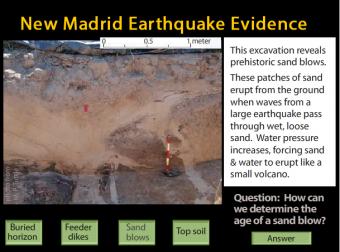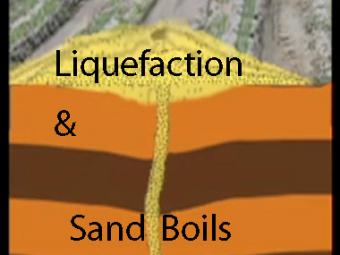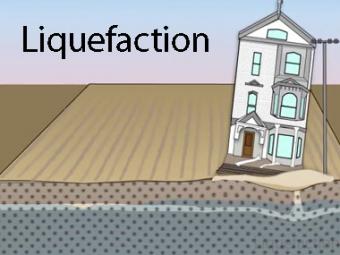Novice

A sand blow is sand and water that come out onto the ground surface during an earthquake as a result of liquefaction. Also known as a "Sand boil."
Scroll over this photograph of an excavation to see evidence for prehistoric sand blows. Thise give evidence for earthquakes and liquefaction in the prehistoric record.
VIEW the interactive in a separate tab, by clicking on "Open Resource" then scroll over named features. (Note some browsers lack the plugins for rollovers.)
IRIS may be discontinuing these interactive animations in 2020. This file is an HTML5 file that uses a browser to view.
VIEW the interactive in a separate tab, by clicking on "Open Resource". (Note some browsers lack the plugins for rollovers.)
OR click Download All. AFTER downloading, you can Open either:

Sand Boil: sand-laden water can be ejected from a buried liquefied layer and erupt at the surface to form sand volcanoes; the surrounding ground often fractures and settles.

Liquefaction is a process by which water-saturated sediment temporarily loses strength and acts as a fluid. This effect can be caused by earthquake shaking.
We encourage the reuse and dissemination of the material on this site as long as attribution is retained. To this end the material on this site, unless otherwise noted, is offered under Creative Commons Attribution (CC BY 4.0) license